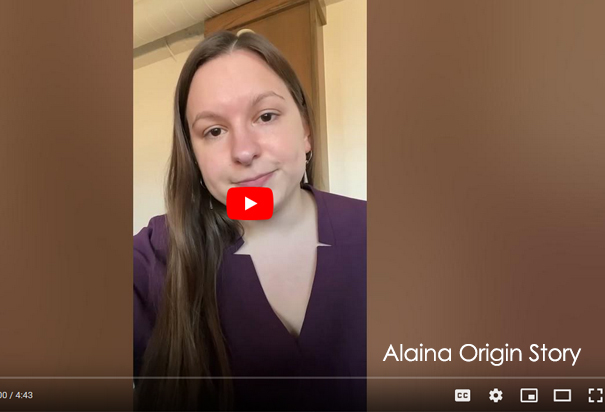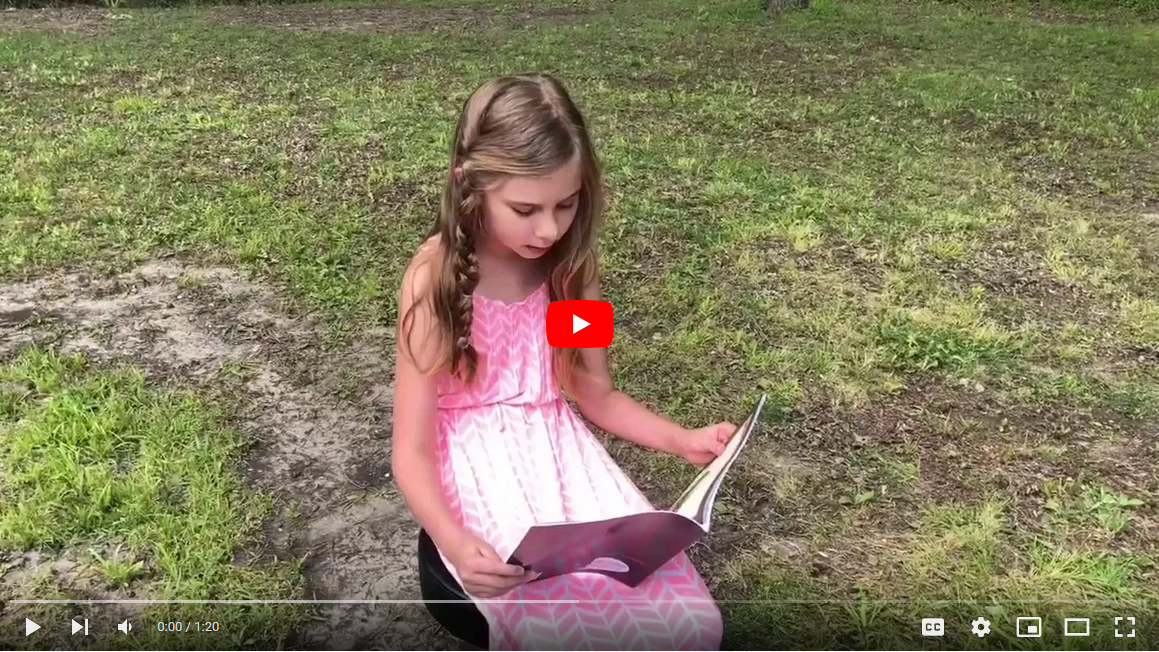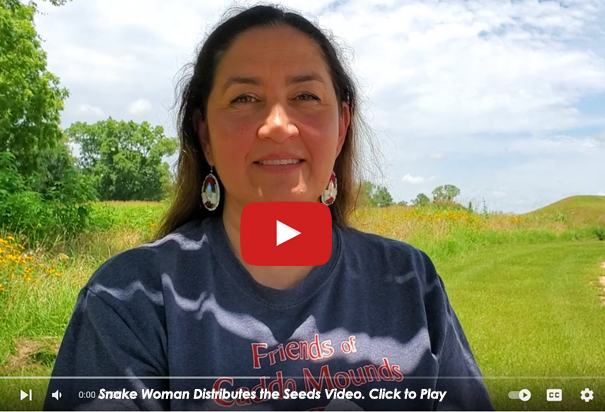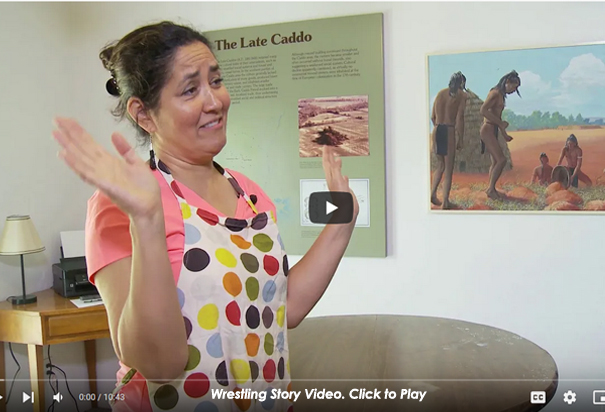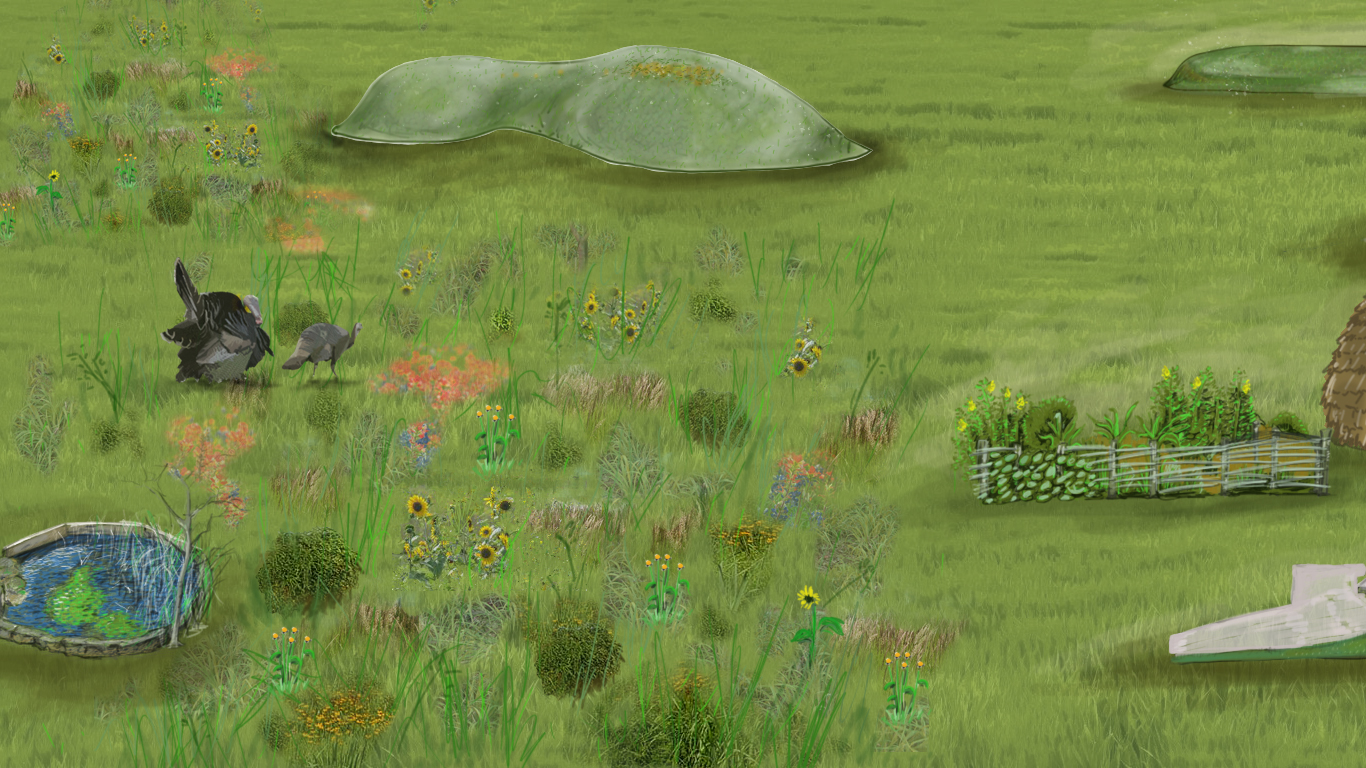
High Temple Mound
“At the heart of Hasinai existence are the cultural traditions that carry people through space and time. In the movement of the dance and the language of the song, the reality of existence is projected into the future.”
~Vynola Beaver Newkumet, Hasinai: A Traditional History of the Caddo Confederacy
Stories are not only carried by spoken word, but also in song. Every time Cah-kit-em'-bin, the Drum Dance, is performed the Caddo origin story is told and relived through song and movement connecting contemporary people with their ancestors. After their emergence from E’-wah’-dah-dut, Mother Dirt, some of the early Caddo settled for more than 500 years in the area known today as Caddo Mounds SHS. The ingenuity of the people, the richness of natural resources in the area, and the successful cultivation of wild plants and corn supported the development of a major civic and ceremonial complex. The High Temple Mound is regarded as an important element in the spiritual practice of the early Caddo. Archeologist Dr. De Ann Story called the area around The High Temple Mound the inner precinct. This was a popular area for dwellings with evidence of 26 structures that were built and occupied nearby.
When we talk about Mound A (the High Temple Mound) at Caddo Mounds SHS, we talk about it as the heart of this large early Caddo civic and ceremonial center. While much of the activity that took place at this spot over 1,000 years ago remains a mystery, archeology does reveal the presence of special structures (including one often referred to as “the maze”), ceremonial objects, and the presence of colored soils that all point to the ceremonial importance of the High Temple Mound.
Soohee, Prairie
Restoring native Texas prairie at Caddo Mounds SHS pays tribute to the deep roots of Caddo ancestry in East Texas and was an important first step in a broad range of land conservation projects planned for the site. According to the Native Prairie Association, the deep roots of native grassland plants protect the watersheds in which they occur, increase water infiltration and water yield, increase water supply by reducing erosion and reservoir sedimentation, and increase water quality due to the lack of fertilizer, pesticide, and herbicide use. Above ground, the native prairie provides food and shelter for pollinators and wildlife. In February 2022 a short-eared owl, a rare site in east Texas, was spotted during a winter bird survey in our restored prairie.
It is a common misconception that indigenous people lived in their native environments having little impact on those spaces. In fact, Indigenous people managed their homelands and tended the wild. In the case of the Caddo in what is now east Texas, this care would have included controlled burns, tending wild berries and nut trees, and fostering turkey habitats. Nooh (the Caddo word for turkey) are woven through Caddo stories, art, songs, dance, and historical accounts. Núh Ka áwshan (The Turkey Dance) was first documented by French explorer Henri Jotel in 1687 and is still performed today. Verses of the turkey dance song tell the story of Caddo's victories through time.
kookayadaneeah, Springs
Ever wonder what it was that nurtured the ancient people of this area and provided the resources to develop agriculture, artistry, and flourishing villages and ceremonial centers? Water is a major piece of that puzzle, and the natural springs at Caddo Mounds may have been one of the things that encouraged people to settle and prosper in the area. Water plays an important role in Caddo stories, ceremonies, and everyday life. Water is central in Caddo stories of underworld creatures and transitions between worlds, the gifting of power, the care and arrival of plants, and more. Like many of us, the Caddo have a flood myth as a part of their story tradition. The natural springs and ponds onsite are home to a variety of wildlife, including koo-hoo, alligators.
Keekah Nattee Toots-ah Naht-ooh, Snake Woman’s Garden
For many in East Texas, gathering wild food and medicine, gardening, and other activities of self-sufficiency are everyday practices with knowledge and skills passed down through generations by parents and grandparents. Caddo story says that Snake Woman brought seeds to the people of the world. In This fertile East Texas landscape, the Caddo developed the skills to cultivate and care for Snake Woman’s gifts around 2,500 years ago. In this area of the Caddo homeland, they tended the foods and medicines of wild spaces as well as domesticating and cultivating garden crops.
At Caddo Mounds State Historic Site in Alto, we explore and teach about the land management, farming, and foraging practices of the early Caddo people through the knowledge of scientists (archeologists and botanists), historians, anthropologists, and contemporary Caddo people.
In 2016, after a visit to the Plum Bayou Garden at Toltec Mounds Archeological Park in Scott, Arkansas, the staff at Caddo Mounds broke ground on Snake Woman’s Garden. Snake Woman’s Garden is a 50x50 foot space that highlights the history of Caddo agriculture from prehistory to present day.
Low Platform Mound
Does the word plaza evoke thoughts of festivals, shared meals, spiritual or other community gatherings? It is likely that the Low Platform Mound (a flat-topped mound) stood at a plaza that hosted these types of activities and others such as trade, diplomatic meetings, and sports like wrestling or stickball.
